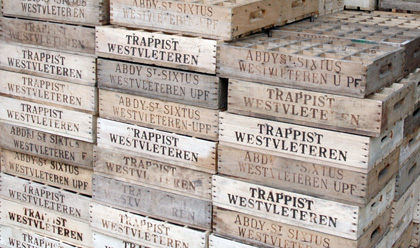
News last week that Abbey Saint Sixtus, the Trappist monastery at Westvleteren in Belgium, might boost production of its much-cherished beer and sell it through supermarket channels led to the consumption of considerable bandwidth on beer discussion boards.
Perhaps some of the questions not addressed by that story were answered in the various threads, but not in the few I had time to read. And I didn’t see a mention of the report from Danny Van Tricht in September that the abbey had installed new lagering tanks. Gee, doesn’t that make you wonder just how much more beer Saint Sixtus might brew?
I don’t have a definitive answer, but an email response from Brother Joris — the monk in charge of brewing at Saint Sixtus — would indicate “not much” and even that won’t be on a permanent basis.
He explained, “I am not allowed to give away more details on the matter, as it should be a surprise.”
He wrote that the reports the brewery would sell beer away from the monastery are not correct, adding, “We remain faithful to our sales policy and we have no intention of opening a second channel for the distribution of our beers in the way suggested by the media.” He indicated the monastery is considering a one-time special project (that would not last for long) to raise additional funds for construction work on the cloister.. “This will however not come down to ‘Westvleteren being for sale in the racks of a supermarket,'” he wrote.
He further explained that the new tanks make the production schedule more flexible, so that brewing needn’t be delayed because beer in the lagering tanks isn’t ready for bottling. This makes it possible to produce a fixed quantity each year (currently that might vary between 4,200 and 4,750 hectoliters a year — comparable to about 3,600 to 4,000 U.S. barrels).
Digression No. 1: Stephen Beaumont has asked what will become of Westvelteren’s cult status should they become easier to buy. The notion — not Mr. B’s, should there be any confusion — that the Saint Sixtus beers might be “dumbed down” is laughable. By adding lagering tanks the monks assure that beer will not be hurried out the door. When I visited the brewery in 2004, Brother Joris explained that the 8 usually lagers four weeks but that the 12 might take two months to ten weeks, “when you get a difficult one.”
If the monks at Saint Sixtus wanted to ramp up production they already could have. The thoroughly modern brewhouse installed in 1989 could crank out a lot more wort, and the squares for primary fermentation sit idle more days than they are used. Plenty of breweries around the world have shortened lagering or aging times to meet growing demand.
Digression No. 2: In cruising through discussion boards I saw it suggested, and I’m paraphrasing, that “the monks should brew more beer to raise more money for the poor.” How come nobody finishes that sentence with what they are really thinking? “. . . and make it easier for me to buy their beer.”
In fact, larger monastery breweries, notably Westmalles and Chimay, help support other monasteries, multiple charities and local economies. Chimay, with 150 employees in its brewery and cheese making facility, is one of the largest employers in one of Belgium’s poorest regions. Westvleteren sells its beer in wooden crates (pictured at the top) manufactured in a “shielded workplace” for those not able to work in a mainstream environment.
But that’s not why they brew. Monks — Benedictine, Cistercian and Trappist — live by the rule of Saint Benedict, written about A.D. 530. Among other things, it calls on monks to be self-sufficient through their own labor.
Brother Joris puts it quite well: “We live on brewing, but we do it so we can continue with our real business, which is being monks.”
